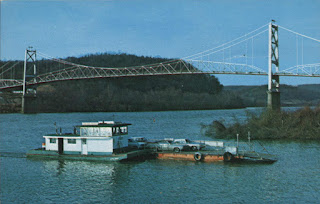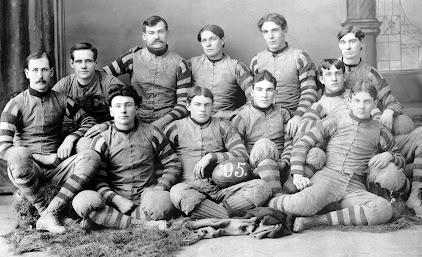This is an abbreviated version for newspaper of an earlier post, “The Royal Visitors,” about Prince Louis Philippe of France’s visit to the Marietta area.. To read the full version, click here.
In July 1839, King Louis Philippe I of France received an American visitor, a Mr. Hughes, the American charge d’affaires in Stockholm. After introductions, conversation turned to the King’s visit to America in the late 1790’s.
King Louis: “Have you ever been at Marietta?”
Mr. Hughes, surprised at the familiar connection, said yes! He had lived there for several years.
King: “Did you know a French baker there, named Thierry?” Francis Thierry was a French immigrant who arrived in Marietta in 1790 with his wife and two children.
Mr. Hughes answered that indeed he knew Thierry.
King, explaining with amusement: “Well, I once carried him away from his family,” referring to a decades-earlier "kidnapping" incident during Louis Philippe’s visit to Marietta in 1797.
Louis Philippe De’Orleans, later King Louis Philippe I, visited the United States with his two brothers in 1796 and 1797. He was anxious to see natural wonders, Indians, and the backwoods of the new country. The King often amazed visitors with his memory of minute details of his American tour decades earlier.
Toward the end of their American tour, Prince Louis and his brothers visited Marietta on a frigid December day in 1797. They were floating down the Ohio River on a keelboat, headed to New Orleans for a return trip to Europe. River travel was treacherous with the ice, swift currents, and snags. They pressed on anyway. At Marietta they stopped for supplies. Louis Philippe wanted fresh bread and was directed to Francis Thierry, a French baker living in Marietta. Thierry fired up his oven to begin baking while the Frenchmen toured Marietta. They were fascinated by the Indian mound earthworks and made a sketch of them.
As they prepared to leave Marietta, Mr. Thierry rushed the fresh bread to their boat on the Muskingum River. But ice on the river was breaking up at that exact moment. The boat lurched away from the shore - with Thierry still on board - to avoid the ice. He was frightened and visualized never seeing his family again. He was relieved to be returned to dry land by canoe when the ice danger passed. The future King and his party continued down the Ohio River, grateful for the fresh bread. He later amused listeners, such as Mr. Hughes, in retelling the adventure of "kidnapping" a French baker at Marietta.
There was another Marietta connection during his American tour. He had a chance meeting with pioneer leader Ephraim Cutler who recorded the event in his journal. Cutler met two Frenchmen while boiling salt at the "Salt Works" on Salt Creek in Muskingum County, Ohio. He was working there as a volunteer with a friend, Peter Noblaise, a Frenchman from Gallipolis, Ohio.
The two visitors asked to stay with Cutler and Noblaise that night at their cabin. Cutler noted that the three Frenchmen became "quite loquacious in their native language." Noblaise was a good singer and sang the Marseilles hymn and several French airs. Cutler reported that one of the men asked him detailed questions about the Ohio Company, and the settlements at Marietta and Gallipolis. After midnight they retired; Ephraim gave him his bunk and bear skin. Cutler learned the next day that the man was Louis Philippe, Duke of Orleans, the future King of France.
Louis was king from 1830 to 1848 when he was forced to abdicate. He was the last king of France; the monarchy ended with the French Revolution of 1848. He treasured memories of his American visit; stating that it profoundly influenced his beliefs and judgment during his reign. Likewise, he left fond memories with those he visited in Marietta.











